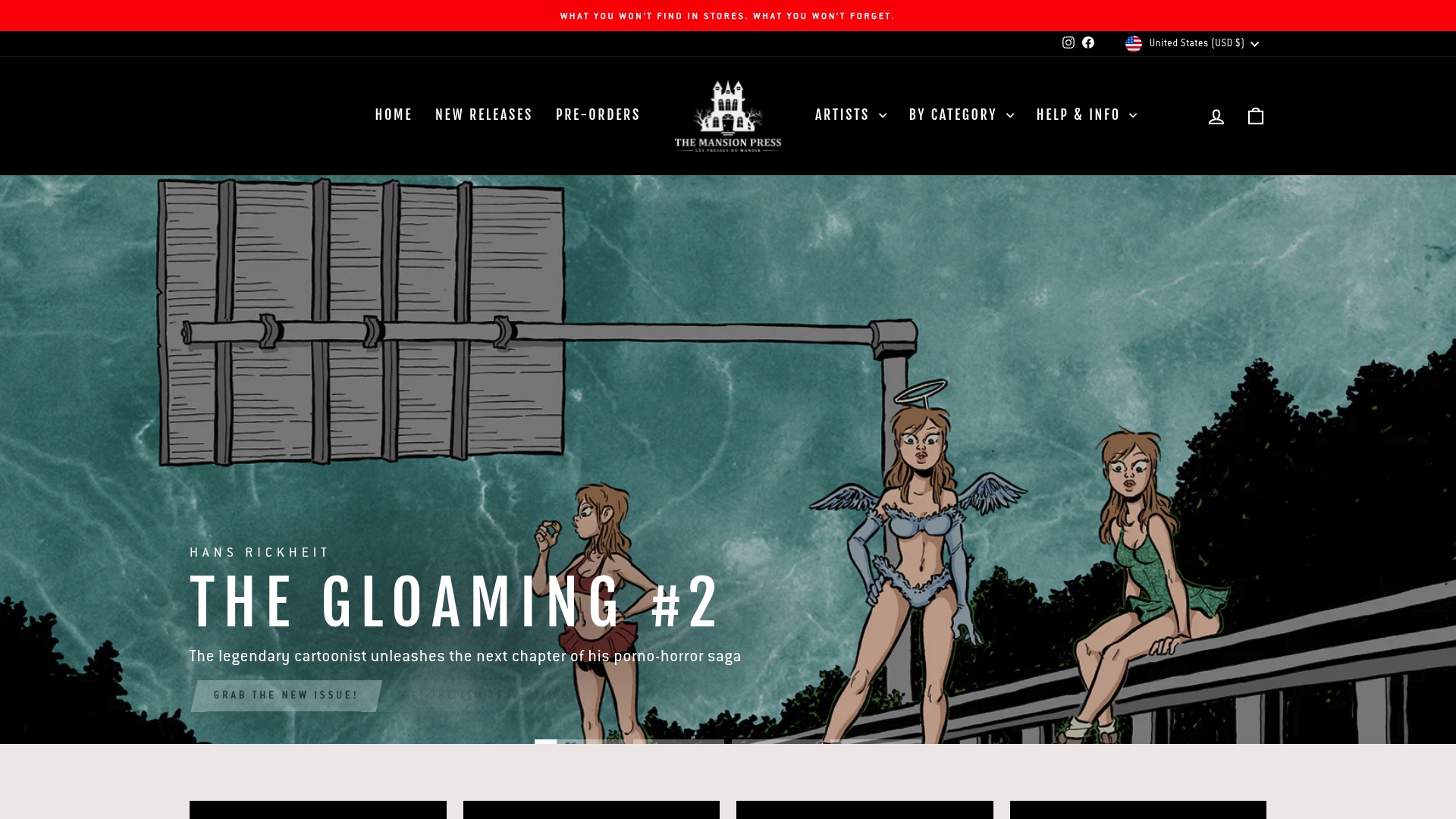Experimental Storytelling in Comics: Complete Guide
Did you know that over 70 percent of readers feel more emotionally connected when comics break with tradition? Comics have moved far past simple tales in boxes, embracing wild new techniques that challenge both the mind and the eye. As artists tear down familiar boundaries and experiment with visual language, readers discover new ways to experience story, meaning, and immersion unlike anything found in classic formats.
Table of Contents
- Defining Experimental Storytelling In Comics
- Major Types And Techniques Explained
- Visual Language And Narrative Structures
- Notable Works And Influential Artists
- Challenges Facing Creators And Readers
Key Takeaways
| Point | Details |
|---|---|
| Experimental Storytelling Redefines Comics | This approach challenges traditional narrative structures, transforming comics into immersive, thought-provoking experiences. |
| Techniques for Reader Engagement | Techniques like non-linear narratives and interactive panel designs encourage active participation and interpretation from readers. |
| Visual Language Complexity | Comics utilize sophisticated visual language that combines text and image, creating multi-layered storytelling that invites deeper meaning-making. |
| Challenges in Narrative Innovation | Experimental comics face challenges related to narrative pacing and reader engagement, necessitating creative solutions to maintain comprehensibility. |
Defining Experimental Storytelling in Comics
Experimental storytelling in comics represents a radical departure from traditional narrative structures, pushing the boundaries of visual storytelling beyond conventional formats. According to research from visual narrative studies, this approach challenges readers’ expectations by introducing unconventional techniques that disrupt linear storytelling and engage audiences in unique cognitive experiences.
At its core, experimental comics deconstruct traditional panel sequences and narrative flow. As research from visual storytelling experts indicates, these works utilize panel juxtaposition and non-linear storytelling methods to convey complex emotional and conceptual landscapes. Artists manipulate visual language by:
- Breaking traditional panel boundaries
- Introducing asymmetrical page layouts
- Incorporating abstract visual metaphors
- Challenging sequential reading patterns
The fundamental goal of experimental storytelling is to transform comics from mere sequential art into immersive, thought-provoking experiences. Experimental Graphic Storytelling: Exploring New Art Forms reveals that these innovative approaches invite readers to actively participate in meaning-making, moving beyond passive consumption. By disrupting expected narrative structures, experimental comics challenge viewers to engage more deeply with visual storytelling, turning each page into an intellectual and emotional journey.
Major Types and Techniques Explained
Experimental storytelling techniques represent a diverse array of innovative approaches that transform traditional comic narratives. According to research from storytelling experts, these techniques fundamentally challenge how visual narratives are constructed and experienced by readers.
One primary technique is non-linear narrative construction, which disrupts traditional sequential storytelling. As research indicates, this approach fragments narrative time and space, creating immersive experiences that require active reader participation. Key techniques include:
Here’s a summary of major experimental storytelling techniques:
| Technique | Description | Reader Impact |
|---|---|---|
| Analytical Montage | Fragments events across frames | Encourages active interpretation |
| Perspective Shifting | Changes visual viewpoints | Deepens immersion, adds complexity |
| Temporal Manipulation | Distorts time progression | Defies expectations, creates suspense |
| Interactive Panel Design | Panels with multiple interpretations | Invites reader participation |
- Analytical montage: Fragmenting single events across multiple frames
- Perspective shifting: Changing visual perspectives within a single sequence
- Temporal manipulation: Distorting traditional time progression
- Interactive panel design: Creating panels that invite multiple interpretations
Understanding Narrative Techniques in Graphic Novels reveals that these experimental approaches go beyond mere visual storytelling. By challenging readers’ expectations, artists transform comics from passive entertainment into dynamic, intellectual experiences.
Manga storytelling, for instance, employs sophisticated analytical montage techniques where a single event is strategically fragmented across frames, creating a complex visual narrative that demands engaged interpretation from the audience.
Visual Language and Narrative Structures
Visual language in comics represents a sophisticated communication system that goes far beyond simple illustrations. According to research on comic storytelling, this unique medium combines sequential images and text to create intricate narratives that engage readers through complex visual interactions.
The core of comic visual language lies in its ability to manipulate perspective and narrative structure. Subjective viewpoint panels play a crucial role in this process, allowing artists to create immersive experiences that transport readers directly into characters’ perceptual worlds. These panels serve multiple narrative functions:
- Revealing internal character emotions
- Providing intimate psychological perspectives
- Disrupting traditional narrative distances
- Creating multi-layered storytelling experiences
Understanding Visual Narrative: The Art of Storytelling illuminates how comic artists strategically use visual elements to construct meaning. By carefully designing panel transitions, spatial relationships, and visual metaphors, creators transform static images into dynamic storytelling instruments. The interplay between text and image becomes a complex dialogue, where each visual element carries semantic weight, inviting readers to actively interpret and construct narrative meaning beyond literal representation.
Notable Works and Influential Artists
Experimental storytelling in comics has been dramatically transformed by visionary artists who push the boundaries of traditional narrative techniques. These innovative creators challenge readers’ perceptions by developing groundbreaking works that redefine visual storytelling.
Some remarkable examples of experimental comic art demonstrate the incredible depth and creativity of this medium. According to research, Matt Madden’s ‘99 Ways to Tell a Story: Exercises in Style’ stands as a landmark work that explores narrative versatility by retelling a simple story in 99 dramatically different visual approaches. Another pioneering example is Stu Campbell’s ‘Nawlz’, an interactive webcomic that seamlessly blends animation, music, and text to create an immersive cyberpunk narrative experience.
Key characteristics of these groundbreaking works include:
- Challenging traditional narrative structures
- Incorporating multimedia elements
- Experimenting with reader interaction
- Pushing technological and artistic boundaries
7 Notable Cult Comic Authors Every Fan Should Know highlights how these artists have consistently defied conventional storytelling expectations. By treating comics as a dynamic, flexible medium, they transform sequential art from a passive reading experience into an interactive, intellectually engaging journey that invites multiple interpretations and challenges readers’ perceptual boundaries.
Challenges Facing Creators and Readers
Experimental comics push the boundaries of traditional storytelling, presenting unique challenges for both creators and readers. These innovative approaches demand new levels of creative thinking and interpretative skills that fundamentally challenge established narrative conventions.
One significant challenge is the concept of narrative pacing and content density. According to research, decompression in comics has sparked intense debate among artists and readers. This technique, characterized by a focus on visual details and character interactions, often leads to slower plot progression and requires readers to engage more deeply with subtle narrative elements.
Key challenges in experimental comic storytelling include:
- Navigating complex visual structures
- Maintaining reader engagement
- Balancing artistic innovation with comprehensibility
- Overcoming traditional narrative expectations
Overcoming the Challenge of Visual Storytelling in Art explores how creators tackle these obstacles. The infinite canvas concept in digital comics exemplifies these challenges, offering unprecedented creative freedom while simultaneously complicating reader navigation and engagement. Artists must now design narratives that guide readers through non-linear, expansive visual landscapes, transforming the act of reading from a passive consumption to an active exploration of storytelling possibilities.
Bring Experimental Comics to Life with The Mansion Press
Are you passionate about experimental storytelling in comics, but struggle to find authentic, boundary-pushing works? The journey from reading about non-linear narratives and unique visual structures to actually owning these rare art pieces can be disappointing when mainstream retailers only offer standard selections. At The Mansion Press, we celebrate creators who defy convention, featuring exclusive artbooks, comics, and original artworks that embody the cutting edge of graphic storytelling. If you are searching for collector’s editions or want to experience analytical montage, interactive panel design, or multimedia collaborations first-hand, this is where innovative vision becomes reality.

Explore our handpicked collection on The Mansion Press to discover limited-edition comics and artbooks crafted by leading experimental artists. Secure your chance to pre-order upcoming releases or add that missing masterpiece to your collection. Experience storytelling without boundaries. Visit The Mansion Press now and immerse yourself in the next evolution of comic art.
Frequently Asked Questions
What is experimental storytelling in comics?
Experimental storytelling in comics refers to innovative narrative techniques that challenge traditional formats and reader expectations, often using non-linear structures and unique visual elements to create immersive experiences.
What are some common techniques used in experimental comics?
Common techniques include analytical montage, perspective shifting, temporal manipulation, and interactive panel design, which all serve to enhance reader engagement and foster active interpretation of the narrative.
How does visual language play a role in experimental comics?
Visual language in experimental comics combines images and text in complex ways, utilizing subjective viewpoint panels to convey internal character emotions and create multi-layered storytelling experiences that invite reader interaction.
What challenges do creators face with experimental comics?
Creators face challenges such as maintaining reader engagement while navigating complex visual structures, balancing artistic innovation with comprehensibility, and adapting traditional narrative pacing to suit non-linear storytelling methods.
Recommended
- Creating Avant Garde Comics: A Complete Step-by-Step Guide – The Mansion Press
- Understanding Narrative Structure in Graphic Novels – The Mansion Press
- Understanding Narrative Techniques in Graphic Novels – The Mansion Press
- Understanding Nurturing Creativity in Comics – The Mansion Press
- Understanding Content Storytelling for Business Growth

